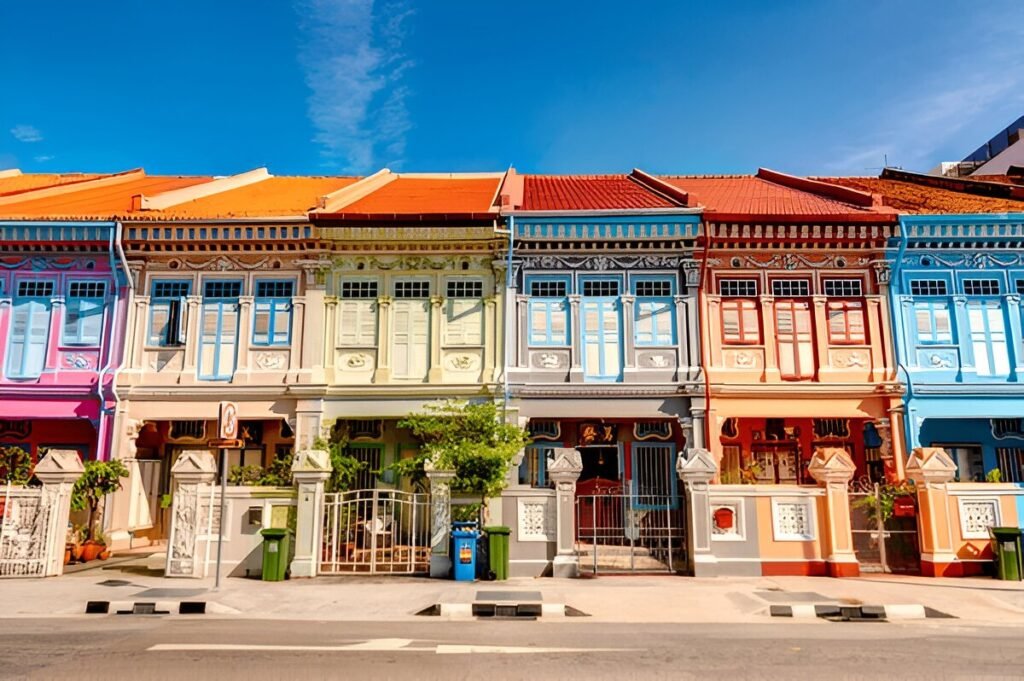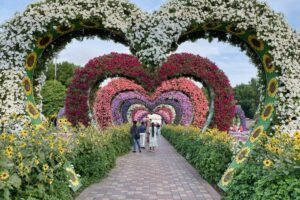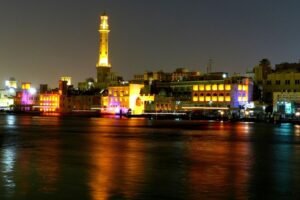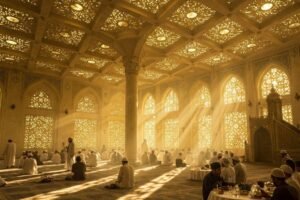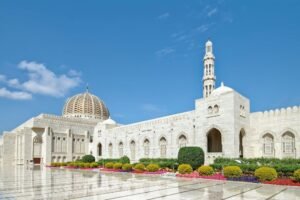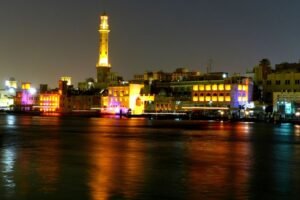Introduction
Singapore’s traditional shophouses and heritage streets tell the story of the nation’s rich cultural past, reflecting a unique blend of Chinese, Malay, Indian, and European influences. These architectural gems, often adorned with intricate details, vibrant facades, and elegant wooden shutters, serve as a reminder of Singapore’s history while adapting to modern life. Exploring these historic streets offers insight into the country’s past, from colonial rule to its rise as a global city.
The History and Evolution of Singapore’s Shophouses
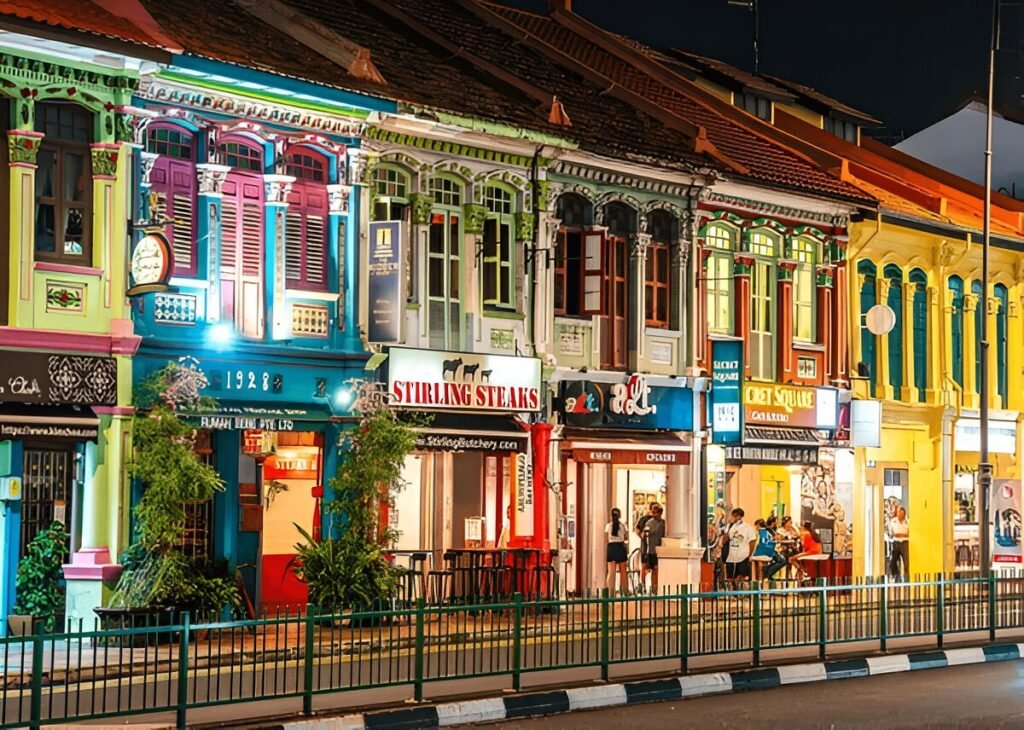
Singapore’s shophouses date back to the early 19th century, developed by early settlers to serve as both homes and businesses. Typically, these buildings feature a narrow yet deep layout, reflecting the land constraints of the time. Influenced by various architectural styles, from Chinese baroque to Art Deco, they have undergone several phases of transformation while maintaining their heritage charm.
Key Features of Traditional Shophouses
- Facade and Ornamentation: The exteriors often feature colorful tiles, intricate carvings, and wooden shutters, making each shophouse unique.
- Five-Foot Way: A sheltered corridor at the front of the shophouse provides pedestrians with shade and protection from rain, a key element in tropical Singapore.
- Interior Layout: Shophouses are designed for both commercial and residential use, typically with high ceilings, inner courtyards, and well-ventilated spaces.
Exploring Iconic Heritage Streets in Singapore
Singapore’s heritage streets are home to beautifully preserved shophouses, offering a mix of cultural landmarks, boutique stores, cafés, and traditional businesses. Here are some must-visit locations:
Chinatown: A Cultural and Architectural Treasure
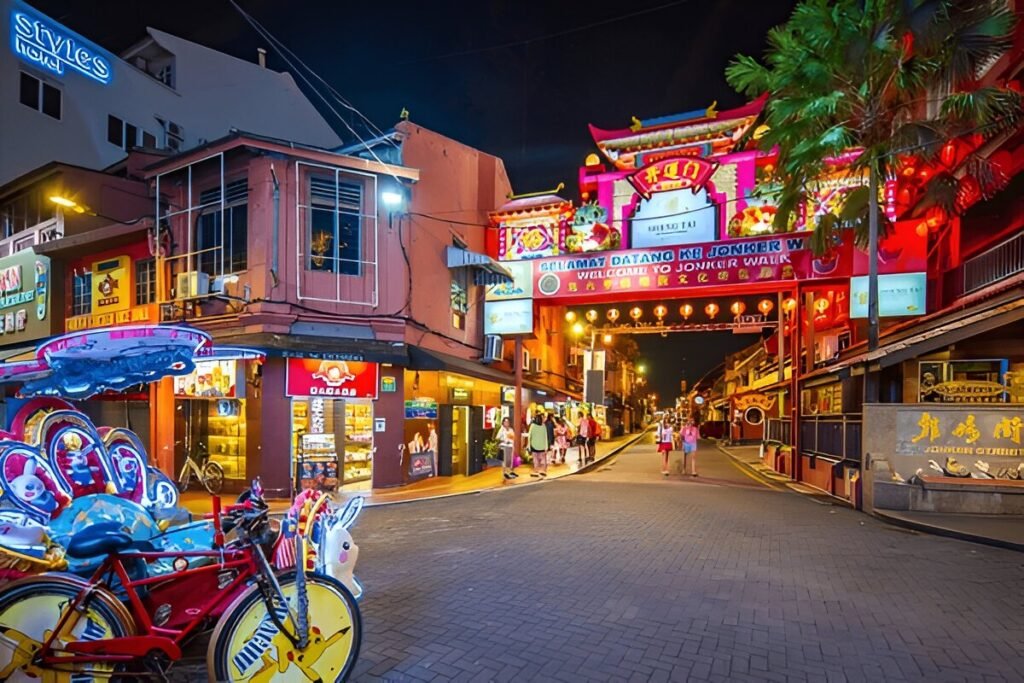
Chinatown is one of the most famous heritage districts in Singapore, known for its vibrant atmosphere and well-preserved shophouses. Highlights include:
- Ann Siang Hill and Club Street: These streets feature restored shophouses that house trendy bars, restaurants, and boutique stores.
- Pagoda Street: A bustling street filled with souvenir shops, heritage centers, and traditional tea houses.
- Buddha Tooth Relic Temple: A stunning Buddhist temple located in the heart of Chinatown, adding to the area’s cultural richness.
Kampong Glam: The Heart of Malay Heritage
Kampong Glam is a historic district that showcases Singapore’s Malay and Arab influences. Key highlights include:
- Haji Lane: A narrow lane filled with colorful murals, independent boutiques, and quirky cafés.
- Bussorah Street: Home to the grand Sultan Mosque and numerous shops selling Persian carpets, fabrics, and Middle Eastern delicacies.
- Arab Street: Famous for its textile shops, perfume stores, and traditional eateries serving Malay and Middle Eastern cuisine.
Joo Chiat and Katong: Peranakan Charm and Heritage
This district is known for its Peranakan culture and well-preserved shophouses adorned with intricate motifs and pastel hues. Notable spots include:
- Koon Seng Road: A street lined with some of the most photogenic Peranakan-style shophouses in Singapore.
- Peranakan Houses: Characterized by their ornate facades, decorative tiles, and distinctive pastel colors.
- Traditional Food: This area is renowned for its laksa, kueh, and other Peranakan delicacies.
Emerald Hill: A Hidden Gem of Colonial Architecture
Located just off Orchard Road, Emerald Hill offers a contrast to the city’s modern skyscrapers with its beautifully restored Chinese baroque-style shophouses. It is known for:
- Charming Residences: The street is lined with stunning heritage homes, some of which date back to the early 20th century.
- Boutique Bars and Cafés: Many of these shophouses have been converted into stylish drinking and dining spots.
- Tranquil Atmosphere: Despite being near Orchard Road, Emerald Hill retains a peaceful, old-world charm.
The Preservation and Revival of Shophouses
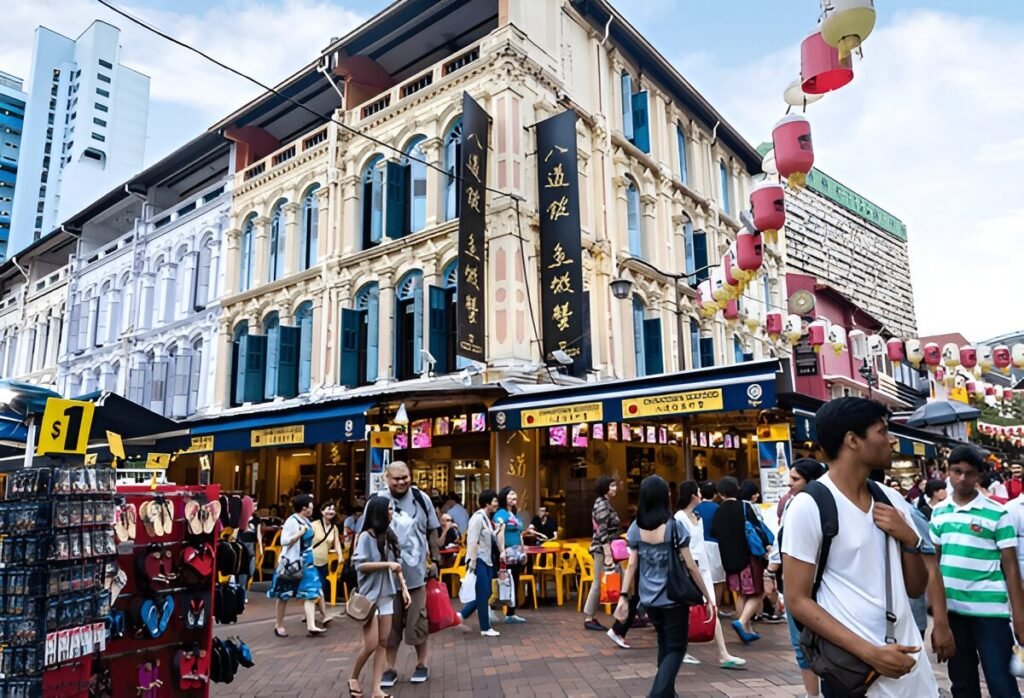
Efforts have been made to preserve Singapore’s shophouses, with many being restored and repurposed for modern use. The Urban Redevelopment Authority (URA) has played a key role in conservation initiatives, ensuring that these historic buildings maintain their architectural integrity.
Adaptive Reuse of Shophouses
Many shophouses have been transformed into:
- Boutique Hotels: Retaining their historic charm while offering luxury accommodations.
- Galleries and Museums: Showcasing Singapore’s art, culture, and history.
- Retail Spaces: Housing high-end brands, unique boutiques, and artisan workshops.
Conclusion
Singapore’s traditional shophouses and heritage streets are more than just architectural marvels—they are a testament to the country’s diverse cultural influences and rich history. Whether you’re exploring the vibrant streets of Chinatown, admiring the Peranakan charm of Joo Chiat, or discovering the colonial elegance of Emerald Hill, these heritage gems offer a glimpse into the past while seamlessly blending with the modern cityscape. By visiting and supporting these historic areas, we can help ensure that Singapore’s heritage remains preserved for future generations.



